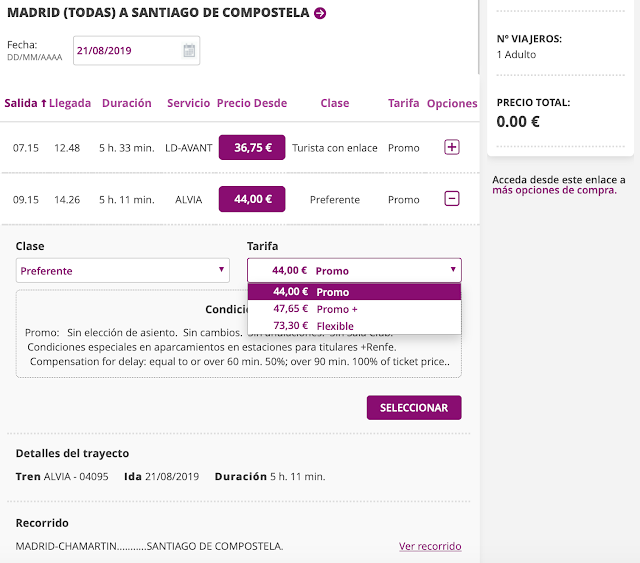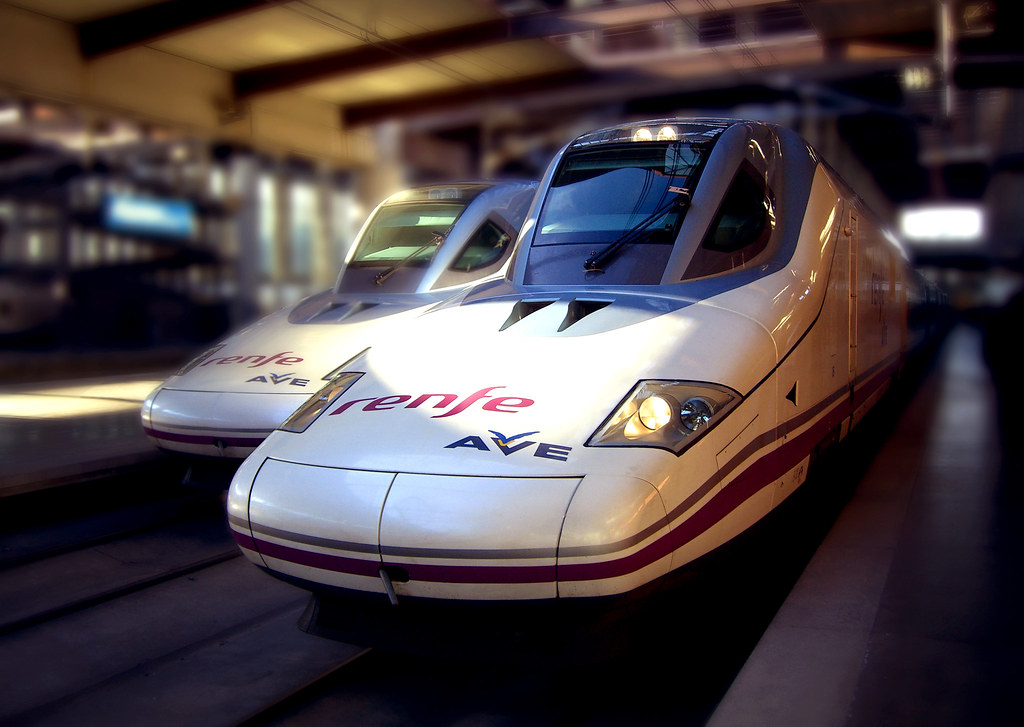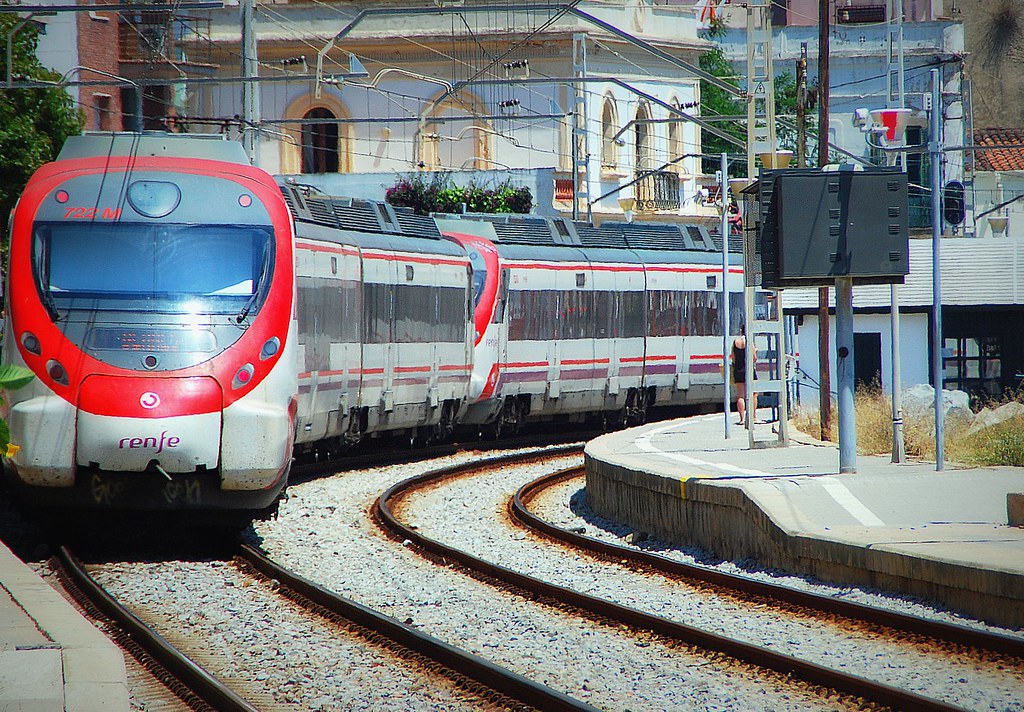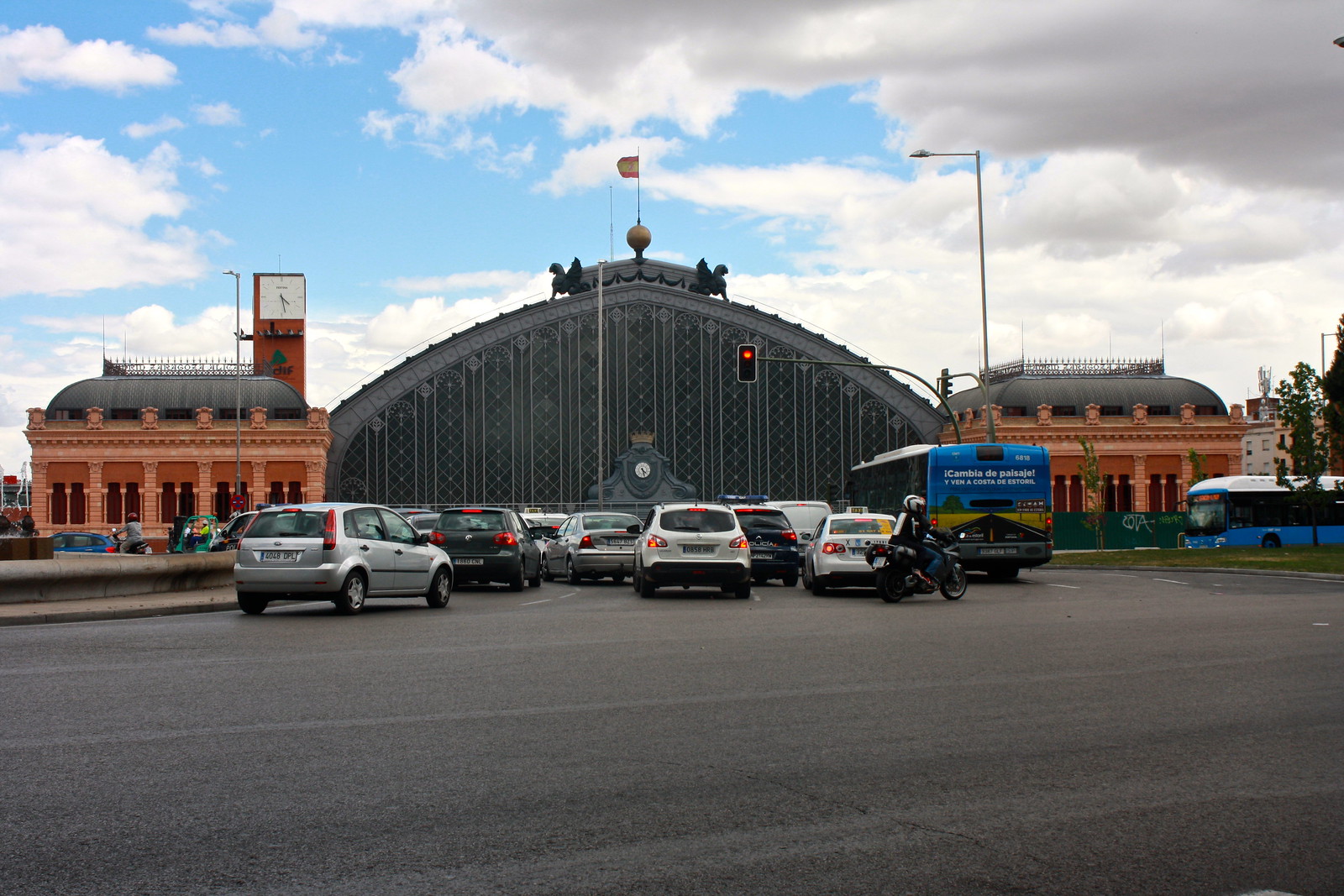One of my favorite things about living in Spain—apart from speaking Spanish, eating good food, and seeing layers of centuries-old history around me—is riding the train. Although the network may not be nearly as comprehensive as France’s, it reaches nearly all corners of the country, making it possible to explore Spain solely by public transportation.
It’s super easy to take advantage of Spain’s extensive network of regional and long-distance trains, but it can be a little dizzying or confusing the first time you arrive if you don’t know what the heck you’re doing (hello, Trevor from 2012!).
In this blog post,
I’d like to share nearly everything I know about Spanish trains. You’ll learn about the main divisions of the network (e.g., commuter vs. cross-country), big stations and regional hubs, where you can cross into France and Portugal, the current state of the high-speed network, a breakdown of the various fares you can buy, how to actually buy a ticket, and customs while riding the train. Read on!
Types of train services
Cercanías
These are short distance or commuter rail that you can find in the biggest metropolitan areas like
Madrid,
Barcelona,
Sevilla, and so on. They make a handful of stops in the city center, continuing far out into distant suburbs and surrounding villages. You can distinguish them by their
red and purple design scheme. They’re called
Rodalies in the Barcelona area.
Media Distancia
For regional or “medium distance” trips, you can take MD trains. They often travel just within a single region (e.g., Galicia or Andalucía), but they can sometimes go halfway across the country. One MD train runs from Madrid all the way to Badajoz on the Portuguese border! Look for the
orange and purple livery on the train cars. These trains also run under
Intercity and
Regional names in certain areas. The high-speed variant of MD is called
Avant and works as a regional train service that runs on the high-speed rails.
Larga Distancia
Literally “long distance,” these trains make cross-country hauls, often from Barcelona to Galicia or Alicante to Asturias. Spain’s few remaining night trains (
trenhotel) fall into this category, as do all AVE high-speed trains that depart from Madrid. The
Alvia train is a hybrid of normal- and high-speed service as it hops on and off the high-speed tracks if a section of the journey hasn’t been upgraded yet. All long-distance trains offer a cafeteria car for coffee, sandwiches, and snacks, and bear two
purple stripes to distinguish them from MD or Cercanías trains.
Feve
A minor player in the Spanish train network, Feve is a system of narrow-gauge railway that runs primarily along the northern coast (plus Murcia and Alicante). A series of mountainous routes connects eastern Galicia with Asturias, Cantabria, and the Basque Country. Feve’s tiny train cars are usually painted
blue and yellow.
Major stations
Madrid-Puerta de Atocha
This is
the major train station in Spain, a huge sprawling complex encompassing Metro, Cercanías, regional, and high-speed services. It can be a little disorienting until you realize that the turn-of-the-century wrought-iron hall isn’t actually where you catch the train, but rather the
old train platforms that were converted into a lobby and indoor garden. All AVE trains depart from Atocha as well as all trains going to the south of the country (think Extremadura, Andalucía, etc.).
Madrid-Chamartín
Far to the north of Madrid’s historic center is the Chamartín station, where you can catch the Metro, Cercanías trains, high-speed trains to
Segovia and Valladolid, and long-haul trains to the north of the country. If Atocha mainly serves destinations in southern Spain, then Chamartín is its counterpart for the north.
Barcelona-Sants
The major terminal of the Catalan capital, Barcelona’s Sants station receives AVE as well as Metro and Rodalies traffic. From Sants, you can now ride the French TGV high-speed train all the way to
Paris’ Gare de Lyon thanks to the recently opened line from Figueres, Spain, to Perpignan, France.
Barcelona-França
Although not connected to the AVE network, Barcelona’s other main train station is a grand Modernista structure covered by twin iron roofs. Historically, it sent off trains bound for France (hence the name), but it primarily services regional routes nowadays.
Regional hubs
Ourense and Monforte de Lemos
Fun fact: the cross-country trains that run between Madrid or Barcelona and Galicia typically split in half at either Ourense or Monforte de Lemos, where each half continues on to coastal destinations like
A Coruña, Ferrol, or
Vigo.
Palencia and Valladolid provinces
In the center of Spain’s sprawling north-central Castilla y León region, Venta de Baños (outside Palencia) is where most trains coming from Madrid-Chamartín branch off and continue on to Asturias, Cantabria, and the Basque Country. Near the regional capital of Valladolid at Medina del Campo, trains from Madrid head out to Galicia via
Zamora as well as to Salamanca.
Border crossings
Figueres–Perpignan (France)
You can take a high-speed train between Figueres in northern Catalunya to Perpignan in southern France.
Irún–Hendaye (France)
These two Basque cities on the Bay of Biscay are separated by just a river, so while it is possible to simply walk across the bridge, it’s super easy to ride the train from Spain into France.
Tui–Valença (Portugal)
The two historic border towns of Tui in southern Galicia and Valença in northern Portugal sit on either side of the Miño River. The
Vigo-to-
Porto express train (the Celta) passes through here.
Fuentes de Oroño–Vilar Formosa (Portugal)
The
Madrid-
Lisbon night train makes an awkward arc north from Madrid before heading back down south into Portugal, crossing the border in western Salamanca province in a town called Fuentes de Oroño.
Badajoz–Elvas (Portugal)
The Portuguese national rail operator CP runs a line that starts in Badajoz in far western Spain to Entroncamento, where you can transfer to trains going to Lisbon or Porto.
Current high-speed network
Madrid–Andalucía
Spain’s AVE network was inaugurated in 1992 when the link between Madrid and
Sevilla came on line. Today, it also has connections with
Málaga (via
Córdoba) and
Granada.
Future expansion: Cádiz.
Madrid–Barcelona
In 2008—a decade and a half after high-speed rail first came to Spain—the AVE finally arrived in Barcelona, passing through the Aragonese capital of
Zaragoza along the way. In Zaragoza, a spur breaks off north to
Huesca, and from Barcelona, the line continues north to Girona, Figueres, and the French border.
Madrid–Valencia
Linking the Mediterranean coast with Madrid and the flat plains of La Mancha, this AVE route connects Madrid,
Valencia, and
Alicante. The spur to Castelló de la Plana will ultimately link Valencia and Barcelona.
Future expansion:
Almería and Murcia.
Madrid–Castilla
The high-speed service from Madrid-Chamartín heads north to
Segovia and Valladolid in the center of the Castilian
meseta or high plains before continuing on to
León.
Future expansion: Asturias (via León) and Cantabria (via Burgos).
Madrid–Toledo
It’s nice that it only takes half an hour from Madrid-Atocha to get to the beautiful historic city of
Toledo, but the only destination you can get to from Toledo’s train station is…Madrid.
Madrid–Galicia
The Madrid-to-Galicia high-speed link is almost finished, but the final link between
Zamora and
Ourense has yet to be completed, leaving the Galician network somewhat stranded. Still, it does a fine job of bringing the far-flung cities of
A Coruña,
Santiago de Compostela, Ourense, Pontevedra, and
Vigo together across extremely rugged terrain in a little over an hour.
Future expansion: The “Basque Y” linking
Bilbao,
San Sebastián, and Vitoria-Gasteiz; and an Extremaduran network connecting Badajoz,
Mérida, and Cáceres to Madrid.
Fares and discounts
 |
| Fare options on Renfe’s website |
Flexible
Although you have to pay for the full cost of the ticket, you also get flexibility, as there’s little-to-no cost to cancel or change your trip (and no issues if you happen to
miss your train).
Preferente
First class for 20 to 30% extra.
Ida y Vuelta
If you buy a round trip ticket you get 20% off your total fare. It’s also possible to do a
compra múltiple and still get the there-and-back discount on a circuit journey between three cities (A > B > C > A).
Promo
If you look online far enough in advance, you can find amazing deals with up to 70% off discounts. I once took the train from
Lugo in Galicia to Madrid for 16€ and from Santiago de Compostela to Barcelona for 20€. The risk with the Promo fare is that you can’t cancel or change your ticket.
Promo+
This is the same as the Promo deal above, but you only receive up to a 65% discount off the standard fare—with the added bonus of being able to change or cancel your ticket for a small fee.
Mesa
If you have a group of four people, you can buy a “table” of four seats and get a steep 60% discount. Because of this great deal, Spanish websites like
Compartetren.com and
Compartemesa.com have sprung up to act as virtual bulletin boards to see who is riding the AVE at the same time and to see if a group of strangers can buy an entire
mesa together and split the cost.
Carné Joven
If you have a
European Youth Card (a.k.a., a
carné joven) you can get an automatic discount of 20% regardless of the journey. Yippee!
How to buy tickets
It’s pretty simple. You can go
in person to most any station in the country and pay with cash or credit card. Useful phrases include:
- Quería un billete… (I would like a ticket…)
- para la próxima salida a… (for the next departure to)
- para el tren que sale a las… (for the tren that leaves at…)
- para el tren que vuelve a las… (for the train that returns at…)
- de ida y vuelta (round trip)
- con descuento carné joven (with youth card discount)
- ¿hay trasbordo? (is there a connection anywhere?)
- ¿puedo pagar con tarjeta/efectivo? (can I pay with a card/cash?)
If the idea of speaking Spanish freaks you out, you can also pay at computerized machines available in a variety of languages.
Another option is
buying online at
Renfe’s finnicky website. Filling out your personal and payment information is the hardest part; just try to accommodate your address into Spanish concepts of streets and residences, and cross your fingers that they’ll accept your credit card—sometimes it works and sometimes it doesn’t. I’ve had more luck with PayPal than with American credit cards. If everything goes through, you can print your PDF ticket then and there, access it via your email, or have it sent to your iPhone’s Wallet app, for example. Finally, you can also take your confirmation code and print a physical copy of your ticket at any train station.
Tickets for Cercanías trains can only be purchased at dedicated ticket kiosks in train stations; i.e., you won’t find commuter train journeys to, say, the Madrid airport listed on the main Renfe kiosks.
Customs on the train
Unlike France or Italy, there’s no need to validate your ticket in little yellow punch-boxes before boarding the train. If you have a ticket, you can just hop on and wait for the conductor to eventually make the rounds and verify your ticket.
On certain long-distance trains, there may be a special cordoned-off access zone before boarding, and in Madrid, I’ve had to pass my suitcases through a security scanner before the train departed.
The vast majority of trains have assigned seating, with the number referring to the row and the letter referring to left or right window or aisle seat. However, some non-peak
media distancia regional trains have free-for-all seating.
Have you ever ridden the train in Spain before? What tips or strategies would you offer? Comment below!










